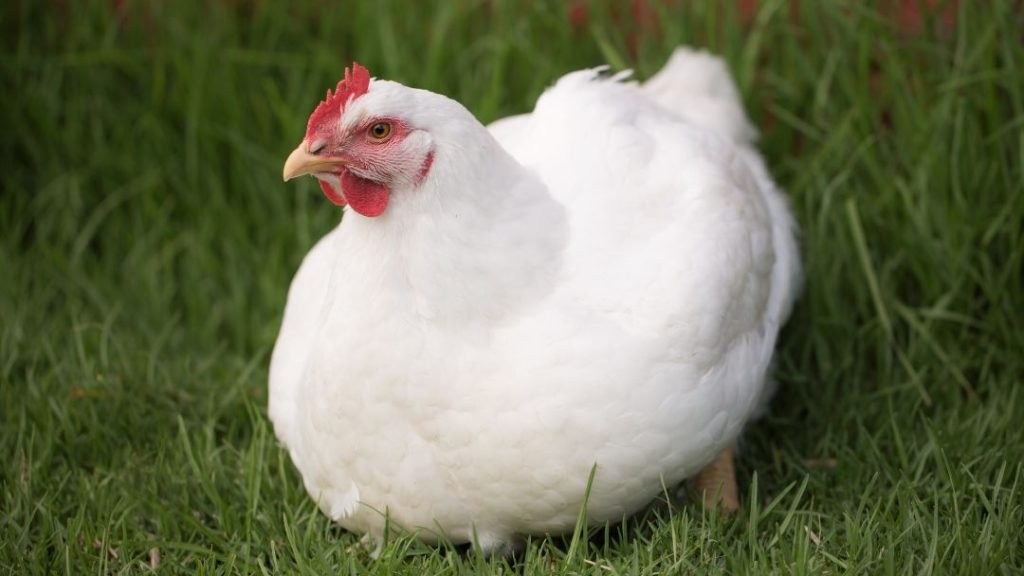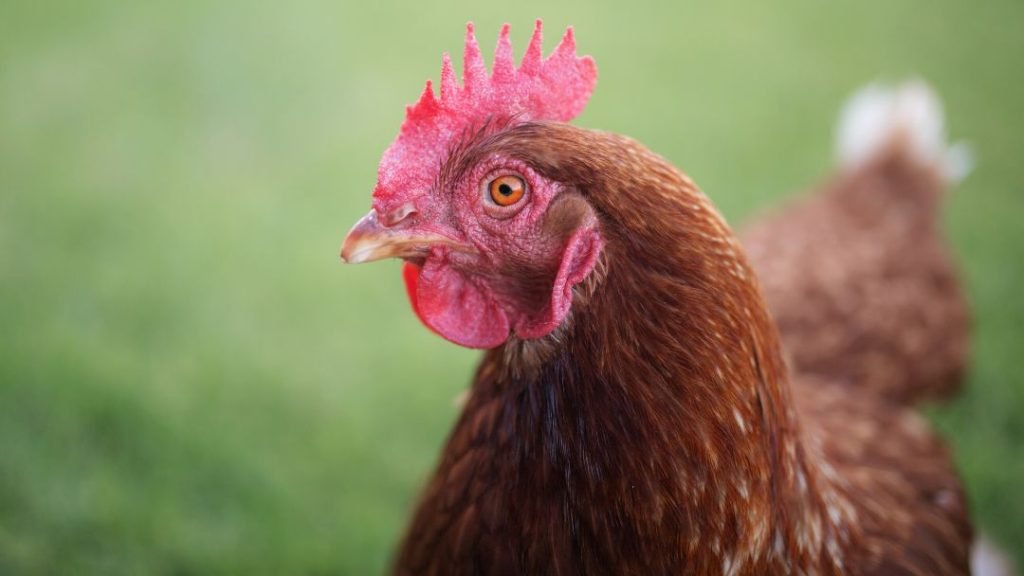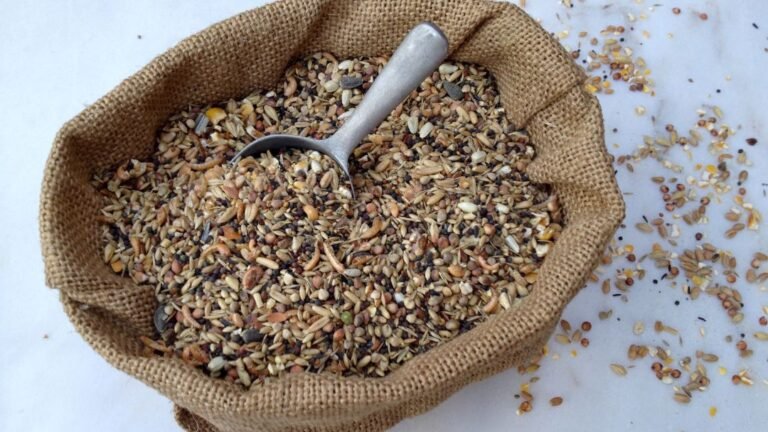Do you know more than 197 million chickens are eaten daily around the world? The white meat of chook is considered a high-quality, complete protein. People also love to especially chicken breasts, which are known as a rich lean protein source, vitamins, and minerals.
Chicken breeds raised for meat are specifically bred to produce high-quality, tender, and flavorful meat in a short period of time. These breeds are known for their rapid growth rate, efficient feed conversion, and large muscle development, making them ideal for meat production.
But what is the best chicken breed for meat out of 1,600+ different chicken breeds? If you want to raise chickens to enjoy a healthy, fresh, and organic source of chicken meat, you must choose the right chicken breed. In this post, I will introduce some top meat chicken breeds.

Raising Meat Birds
Raising meat birds requires careful attention to their housing, feeds, water sources, dispatching supplies, and breed-specific needs. Providing the right environment and resources is crucial for their growth and development.
Here’s what you need to know:
Housing
- Create a spacious and well-ventilated coop to prevent overcrowding and ensure good air quality.
- Use suitable flooring like straw or wood shavings to provide comfort and insulation.
- Install proper lighting to promote optimal growth.
- Ensure secure enclosures to protect the birds from predators.
Feed
- Opt for a balanced diet that meets the specific nutritional requirements of meat birds.
- Provide a high-quality commercial feed formulated explicitly for meat production.
- Supplement their diet with protein-rich sources like insect larvae or mealworms.
- Introduce fresh fruits and vegetables to diversify their nutrient intake.
Water Source
- Offer clean and fresh water at all times to keep the birds hydrated.
- Place water containers at a suitable height to prevent contamination and spills.
- Monitor water quality regularly to maintain bird health and performance.
- Ensure easy access to water for the chickens to encourage proper hydration.
Dispatching
- Ensure humane dispatching of meat birds to minimize stress and suffering.
- Use a sharp knife or specialized poultry cone for slaughtering.
- Provide a clean and controlled environment for the dispatching process.
- Follow proper techniques and procedures to maintain product quality and safety.
Breed Specific Requirements
- Choose a meat bird breed that suits your specific requirements and farming setup.
- Research and understand the breed’s growth rate, feed conversion ratio, and overall characteristics.
- Cater to breed-specific needs such as temperature requirements and foraging behaviors.
- Monitor the health and well-being of the birds closely, addressing any breed-specific concerns promptly.
By adhering to proper housing practices, providing a nutritious diet, ensuring access to clean water, using humane dispatching supplies, and meeting the breed-specific needs of your meat birds, you can optimize their growth, health, and meat quality.
Remember to consider each aspect carefully to create the ideal conditions for raising meat birds.
Where To Find Meat Chickens
If you’re considering raising chickens for meat production, it’s important to know where to find the right breed. Whether you prefer to buy them directly from hatcheries or local farmers, or even hatch your own, there are several options available.
Buying From Hatcheries
- Hatcheries specialize in breeding and selling a variety of chicken breeds, including those specifically bred for meat production.
- Most hatcheries offer convenient online ordering and can ship day-old chicks directly to your doorstep.
- Some popular hatcheries to consider include Murray McMurray Hatchery, Cackle Hatchery, and Meyer Hatchery.
- You can choose from various meat chicken breeds such as Cornish Cross, Red Ranger, or Freedom Ranger, depending on your preferences.
Local Farm Suppliers
- Local farmers or suppliers in your area often raise and sell meat chickens.
- Look for advertisements in local newspapers, community bulletin boards, or online platforms where farmers might advertise their produce.
- This approach not only supports local agriculture but also allows you to establish a valuable connection with the farmers.
- Visit local farmers’ markets or community events focused on agriculture to meet farmers personally and inquire about purchasing meat chickens.
Hatch Your Own
- If you’re interested in hatching your own meat chickens, investing in an incubator is essential.
- You can purchase fertile eggs from hatcheries or local breeders to incubate and raise your own chicks.
- This method provides a fulfilling experience and allows you to have full control over the care and feeding of your chickens.
- Keep in mind that hatching chickens requires knowledge and patience, so be sure to educate yourself on the incubation process.
Local Poultry Associations:
- Poultry associations and clubs often have members who specialize in breeding meat chickens.
- These associations hold meetings or events where you can connect with breeders and purchase birds.
- Attend local poultry shows or exhibitions to meet breeders, learn about different meat chicken breeds, and potentially make a purchase.
Remember, building relationships with poultry enthusiasts can be incredibly valuable for gaining knowledge and support throughout your meat-chicken journey.
Selecting Meat Chickens For Your Homestead
When deciding on the right chicken breed for meat on your homestead, it’s important to consider factors like growth rate, feed efficiency, and suitability for your specific needs. Making an informed choice will ensure successful meat production for your self-sufficient lifestyle.
Take a look at the following considerations to help guide you in selecting the most suitable chicken breed for your homestead:
Breed Characteristics
- Growth Rate: Look for breeds that have a fast growth rate, as this means you’ll be able to harvest meat at an earlier stage.
- Size: Consider the desired weight of your meat chickens and choose a breed that will meet your specific needs.
- Temperament: Ensure the breed you select has a gentle and calm temperament, to make handling and management easier.
- Hardiness: Opt for a breed that is known for its ability to adapt to various climates and environments, ensuring the chickens thrive in your homestead.
- Disease Resistance: Select a breed that has good resistance to common poultry diseases, reducing the risk of illness and loss of your flock.
Feed Efficiency
- Feed Conversion Ratio: Look for breeds that have a low feed conversion ratio, indicating their ability to convert feed into meat efficiently.
- Appetite: Choose a breed that has a robust appetite, ensuring they consume enough feed to support their growth.
- Foraging Ability: Consider breeds that have good foraging instincts, as they will be able to supplement their diet with natural food sources, helping to reduce feed costs.
- Cost of Feed: Assess the availability and affordability of feed in your area and select a breed that can thrive on the available feed options.
Space And Housing Requirements
- Space Availability: Evaluate the available space on your homestead and choose a breed that suits your specific spatial limitations.
- Housing Design: Consider the housing requirements of the breed, such as the need for proper ventilation, insulation, nesting boxes, and roosting bars.
Slaughter And Processing:
- Processing Ease: Take into consideration the ease of processing the breed, including the plucking, evisceration, and cooling process.
- Meat Quality: Research the breed’s meat quality attributes, such as tenderness, flavor, and texture, to ensure it meets your expectations.
Remember, each breed has its unique characteristics, so take the time to assess your requirements and make an informed decision that will lead to a successful and rewarding meat-chicken venture on your homestead.
10 Best Chicken Breeds for Meat
Do you want to raise a meat-based chicken breed? Whether it is for household or commercial purposes, selecting the right chicken breed is necessary.
The following are some top chicken breeds that you can grow in your backyard and enjoy their tasty meat.
01. Cornish Cross
When it comes to meat production, Cornish Cross is one of the most popular options. Their meats are tasty as they are butchered at such a young age.
This fast-growing chicken breed can be as big as 12 pounds. Regular chickens take around 16 to 21 weeks to become mature.
On the contrary, Cornish Cross reaches 7 to 9 pounds of weight within 6 to 8 weeks.
Usually, roosters have an average weight of 10 pounds, and hens 8 pounds at the age of 8 weeks. Their average height is between 10 and 15 inches.
Cornish Cross requires minimum space to raise. In fact, 2 square feet per bird is okay for them.
However, these broiler chickens are not extremely hardy. Protecting them from adverse weather conditions is necessary.
Compared to regular flocks, Cornish Cross chickens a lot more. Their average daily feed consumption is around 1 pound or 1.6 ounces per bird. This is the fastest-growing meat chicken out there.

⚖️ Avg Weight: 7-12 pounds
🗡️ Harvest in: 16-21 weeks
✅ Pros:
– Exceptional growth rate and meat yield.
– Quick time to market (6-8 weeks).
❌ Cons:
– Susceptible to health issues due to rapid growth.
– Limited adaptability to free-range or pasture-based systems.
02. Red Ranger Broilers
This chicken breed is common in large-scale poultry operations. They are well known for their quick growth rate.
Red Ranger Broilers grow slower than Cornish Crosses but faster than dual-purpose chickens.
Unlike many regular chickens, Red Ranger Broilers take only 12 to 14 weeks to reach a butchering weight.
The average size of a male chicken is around 6 to 8 6 pounds, and females weigh 5 to 7 pounds. Their average height is 22 to 24 inches.
Compared to their body size, Red Ranger chickens need less space. 2 square feet of coop space is enough for every Red Range chicken.
Giving 8 to 10 square feet of run space appears sufficient for every bird.
Compared to Cornish Crosses, the meat of Red Ranger Broilers are more flavorful. Their dark meat has a rich flavor. They have more thing meat and less breast meat than Cornish Crosses.

⚖️ Avg Weight: 7-10 pounds
🗡️ Harvest in: 12-16 weeks
✅ Pros:
– Good foragers
– Fast Growth
– Lots of meat without the health issues
– Good taste
❌ Cons:
– They have inconsistent growth rates
03. Jersey Giant
This American domestic chicken breed has a friendly, calm, and docile nature. Jersey Giant chickens take around 8 to 9 months to become fully mature.
Males have an average weight of 13 to 15 pounds. In contrast, female chooks weigh around 11 pounds. The average height for roosters is 22-26 inches, and for hens is 16-20 inches.
Meats of Jersey Giant Chickens have a lingering flavor. It has a dark-meat taste due to its higher fat content.
It is necessary to provide them with around 6-8 square feet of coop space per bird. Some birds can be as tall as 28 inches. Make sure to provide them with extra spaces for optimal comfort.
Jersey Giants are good foragers. If you raise them in a confined space, make sure to serve those grubs and bugs. This will increase their meat production.
⚖️ Avg Weight: 11-13 pounds
🗡️ Harvest in: 16-21 weeks
✅ Pros:
– Large meat yield.
– Impressive size.
❌ Cons:
– Slower growth, longer time to market.
– Requires more feed.
04. Bresse
Do you love to eat tastebud-exploding meat? Bresse chickens are known as one of the most delicious chickens globally. People also call them the “Queen of Chickens.”
They are not quick-growing birds. Bresse chickens will take around 16 weeks to reach a mature weight.
The average weight for roosters is 6-7 pounds, and for hens is 4-5 pounds. This docile bird is easy to take care of.
They are mainly free-range chicken. Keeping them in the outdoor environment for a minimum of four months is necessary.
You want to provide them enough space to roam and forage. Providing each chook at least 32 square feet of foraging space is a good rule of thumb.
When keeping them inside a chicken keep, a minimum of 4 square feet of floor space per bird is essential.
Make sure to feed them commercial chicken feed, raw milk mixed with grains, vegetables, and fruits for optimal weight gain.
⚖️ Avg Weight: 5-7 pounds
🗡️ Harvest in: 16-20 weeks
✅ Pros:
– Docile
– Tastes great
❌ Cons:
– Not too much meat
05. Buckeye
When it comes to desirable meat qualities, Buckeye chickens are a good choice. This cold-hardy breed is resistant to many diseases. That’s why they can live for 10 or more years.
Buckeyes are docile, peaceful, and friendly in nature. They don’t bully other chickens too.
Male chickens have an average weight of 9 pounds, and females 6.5 pounds.
But they are a slow-growing chook. It may take around 7-9 months to become fully mature.
Buckeye chickens are also a good choice for egg production. They lay around 175 to 240 eggs per year.
This good-sized breed has nutty-tasting meat. Its rich, nutty flavor makes it preferable to other chicken breeds. However, make sure to brine the meat first to get the best taste.
⚖️ Avg Weight: 6-9 pounds
🗡️ Harvest in: 16-21 weeks
✅ Pros:
– Excellent for both meat and eggs
❌ Cons:
– Slower growth
– Noisy
06. Chantecler
Do you want to enjoy well-fleshed breast meats? If so, Chantecler chickens are a good choice.
Male chooks have an average weight of 9 pounds, whereas female birds weigh around 6.5-7.5 pounds.
This productive fowl takes around 4 to 6 months to become fully mature.
They are easy to raise as both confined and free-range systems are okay for them.
But this slow-growing bird prefers free-ranging space. When raising them inside a chicken coop, make sure to provide a minimum of 5 square feet of space per bird.
Besides, giving them a minimum of 10 square feet of run space per bird is necessary when free-range space is not available.
Make sure to serve them a well-balanced diet. It should contain a mixture of grains, protein, and fresh greens. This will ensure better well-being and meat production.
⚖️ Avg Weight: 6-8 pounds
🗡️ Harvest in: 16 weeks
✅ Pros:
– Excellent choice for cold weather
– Good brown egg layer
– Gentle disposition
❌ Cons:
– Do not thrive in hot climates
07. Croad Langshan
This popular utility breed originally originated in China. They can cope with various weather conditions due to their hardy and adaptive nature.
Roosters can be as big as 9.5 pounds, whereas hens can reach up to 7.5 pounds.
Croad Langshan can be 22 to 28 inches tall when they reach maturity.
Their meats are flavorful and rich, with a slightly sweet taste. Some people found similarities between Croad Langshan’s meat and duck or goose.
This chicken breed requires a bit of ample space. It is best to maintain 6-8 feet of space for birds when raising chooks indoors.
Make sure to provide them with around 25 sqft of run space per chicken. If you want to raise them in a free-range space, keeping 250 square feet of space per bird is necessary.
⚖️ Avg Weight: 7-9 pounds
🗡️ Harvest in: 16-18 weeks
✅ Pros:
– Good Meat Quality.
– Hardiness.
❌ Cons:
– Slow Growth.
– Lower Meat Yield.
08. Dorking
Are you looking for a strong and hardy bird that requires minimal care? This forage chicken breed is an excellent option.
Their delicate and tender meat has a mild flavor without being too gamey. You will love their flavorful chicken meat, which is lower in fat compared to dark-meat chickens.
Cocks have an average weight of 10 to 14 pounds, whereas hens weigh approximately 8 to 11 pounds on average.
Dorking chickens will need a minimum of 6 to 8 months to become fully adult. In some cases, it can be as late as two years.
They need around 10-20 square feet of coop space per bird. But if the coop is a bit cozy, a slightly smaller coop won’t be a problem.
You can feed them oyster shells, grits, vegetables, and fruits for better egg production.
⚖️ Avg Weight: 7-9 pounds
🗡️ Harvest in: 16 weeks
✅ Pros:
– Broad breasts.
– Great foragers.
– Gentle Disposition.
– Dual Purpose.
❌ Cons:
– Little hard to find.
09. Egyptian Fayoumi
When it comes to unparalleled foraging skills and remarkable disease resistance, Egyptian Fayoumi is one of the best chickens.
This fast-growing breed takes around 4.5 months to become fully mature. Cocks have an average weight.
Their average weight for cocks is 4.5 pounds, and hens 3.5 pounds. They can be as tall as 22 inches. But their average height is 20 inches. Bantam chickens will be around 12-14 inches tall.
Their dark meat has a similar flavor to turkey chicken. It tastes slightly gamey and earthy with a bit of mellowness.
Providing them with a minimum of 3-5 square feet of coop space is a good practice to ensure optimal comfort.
However, arranging for a spacious running area is necessary as Egyptian Fayoumi has a flighty, wild nature. A lack of space may make these tough and thrifty birds feather pickers.
⚖️ Avg Weight: 4-5 pounds
🗡️ Harvest in: 16-18 weeks
✅ Pros:
– Fast Growth
– Tastes Great
❌ Cons:
– Needs more space.
10. Cochin
This heavy, feather-legged chicken breed is well known for its extremely gentle disposition.
Cochin chickens are a slow-grower breed. They can take up to two years to become fully mature.
Cocks have an average weight of 11 pounds, whereas hens weigh about 8.5 pounds after completing their mature stage.
Female birds can be as tall as 15-16 inches. In contrast, adult males have an average height of 20-21 inches.
Meats of Cochin chickens have a full-bodied taste with a chewy texture. Their meat has a very clean and lean taste without any special flavor.
They need around 3-5 square feet of coop space and 10-15 square feet of run space per bird.
This cold hardy chicken breed is easy to raise as they don’t fight and are not prone to run away. However, extreme heat may make them sick faster.
⚖️ Avg Weight: 8-11 pounds
🗡️ Harvest in: 25-40 weeks
✅ Pros:
– Large and heavy with good meat potential.
– Unique appearance.
❌ Cons:
– Feathers on legs can complicate processing.
– Very Slow growth.
How To Fatten Your Meat Chickens The Right Way
Raising meat chickens involves more than just selecting the right breed. To ensure the best meat quality and quantity, it is crucial to properly fatten them throughout their growth. Here are some effective techniques to help you achieve that:
Provide Adequate Feeding
- High-quality feed: Opt for a balanced diet that is specifically formulated for meat chickens. Look for feeds with the right blend of protein, minerals, and vitamins.
- Controlled portions: Feed your chickens at regular intervals, preferably twice a day, to avoid overeating or underfeeding. Monitor their consumption and adjust the amount accordingly.
- Nutritional supplements: Consider adding supplements like probiotics or vitamins to boost their overall health and promote rapid growth.
Create A Comfortable Environment
- Adequate space: Ensure sufficient space where each chicken has enough room to move around comfortably. Overcrowding can lead to stress and slower growth.
- Proper ventilation: Maintain proper airflow to prevent the buildup of ammonia and other harmful gases, which can impact growth.
- Cleanliness: Keep the coop clean and dry to minimize the risk of diseases and infections. Regularly remove droppings and provide fresh bedding.
Encourage Exercise And Activity
- Outdoor access: Allow your meat chickens some time outdoors in a secure area. This encourages them to engage in natural behaviors, such as pecking and foraging, which helps develop muscle and enhance meat quality.
- Space for movement: Within the coop, provide options for perching, scratching, and roosting. This allows chickens to exercise their muscles and stay active.
Monitor Health And Quality
- Regular check-ups: Maintain a close eye on your meat chickens’ health. Look out for any signs of illness or distress, and promptly address them.
- Weight and growth tracking: Monitor the weight and growth of your chickens regularly to ensure they are on track. Adjust feeding quantities and diet if necessary.
- Slaughter at the right time: Time the slaughter process properly to achieve the desired meat quality and tenderness. Consult with experts or research the recommended processing times for your particular breed.
Properly fattening meat chickens is essential for achieving high-quality, tender meat. By providing the right diet, creating a comfortable environment, encouraging exercise, and monitoring their health, you can ensure optimal growth and meat production. Implement these techniques, and you’ll be on your way to raising delicious and healthy meat chickens.
Closing Thoughts
A huge number of chicken breeds are available worldwide. However, not all of them are ideal for meat production. Many chicken keepers prefer to raise dual-purpose chickens. If you want to enjoy only high-quality meat, the above-mentioned chicken breeds are the top choice.
But properly raising them in an ideal environment is the key. You want to ensure they get enough space, the right food, and a predator-free atmosphere. Hopefully, you got a clear overview on what is the best chicken breed for meat. Let me know if you still have any queries!



